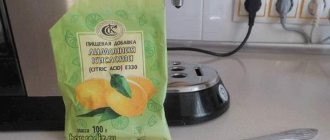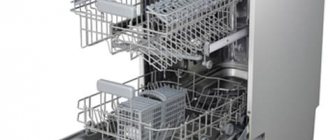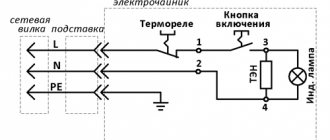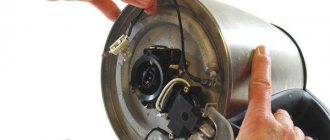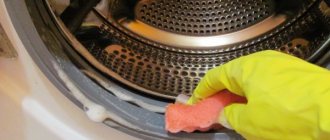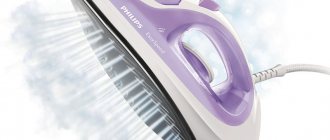When water boils, solid deposits appear inside the kettle, small particles of which even pass through the mesh and end up in the drink. And the view inside the kettle becomes unaesthetic. It will take very little time to get rid of this problem. In addition, every housewife probably has a life-saving remedy in her kitchen.
Find out how to clean a kettle even from old scale using ordinary table vinegar and enjoy a wonderful tea party!
Causes of scale and its harm
The cause of deposits on the walls of the kettle are the salts contained in the water. The most unpleasant for dishes are calcium compounds. When water is heated, calcium carbonates (CaCO3) and magnesium carbonates (MgCO3) are formed. They settle to the bottom, walls and heating elements of the kettle in the form of a rough yellow-gray coating, which is called scale.
The intensity of the appearance of deposits depends on the “hardness” of the water (the level of mineral salts in it) - the higher it is, the faster plaque forms.
Note! Scale not only spoils the appearance of the dishes, but also reduces heat transfer - it takes more time to bring water to a boil. If the inside of the kettle is “dressed in a fur coat” with a thickness of only 1 mm, heat costs will increase by 10%!
The damage caused by scale in electric kettles is especially noticeable. By settling on heating elements, deposits contribute to their rapid failure. As a result, expensive equipment breaks down without using up its full service life.
If you ignore the appearance of scale in the kettle and continue to boil water in it, soon tea drinking will cease to bring joy and pleasure. And all because, along with the water, gray flakes - particles of salt deposits - will begin to fall into the tea cup. This “additive” can ruin not only the appearance of the drink, but also its taste.
Today, there are many ways to completely purify drinking water. But it is the content of microelements in it that makes water “alive”, since they are necessary for the normal functioning of various organs and systems of the body.
There is only one way to preserve the beneficial properties of water and solve the problem of scale - timely cleaning of dishes.
How to get rid of scale in a stainless kettle
Acids are used to remove scale. Minerals form a layer of calcium and magnesium carbonates and calcium sulfates. However, traces of the calcined layer form silicic acid compounds. Alkali is also suitable for silicate deposits. Sometimes both means are used. The only drawback is that you cannot clean it with a metal hedgehog, so as not to scratch the surface.
Watch the video on how to clean a stainless steel kettle:
Author's note
Kirilova Olga
A glass, ceramic, enameled, or stainless steel kettle must have a mark on the bottom: “suitable for use on a gas stove.”
How to descale a kettle with vinegar:
- Pour water and table preservative in a ratio of 2 to 1 (almost a glass of acid per 500 ml of water). If you use 70% essence, then take it at the rate of: 2 tbsp per 500 ml of water. l.
- Place on the flame and wait for it to boil. Before doing this, open the window; there will be a pungent smell in the room.
Author's note
Kirilova Olga
If there is little scale, use a less saturated solution. Take 0.5 cups of acid for the same amount of water.
In addition to vinegar, it can be cleaned with folk remedies:
- brine;
- potato, apple and pear peels.
Peeling apples and potatoes
Such products are not recommended for an electric kettle, only for metal and enamel tanks. Add them to water and boil.
Why is the use of vinegar so effective in the fight against scale?
Many cleaning products contain organic acids, aromatic additives and other chemical compounds. All this is included in the price of the product.
In fact, the basis of descaling is the reaction of splitting magnesium and calcium salts. Vinegar copes with this task without any problems, and in small concentrations - the most popular are 6% and 9%.
Another reason why descaling a kettle with table vinegar shows excellent results is the liquid state of the cleaning agent. It penetrates into all hard-to-reach places, removing salt deposits.
In addition, vinegar has other advantages over most limescale removers. Among the main ones:
- availability;
- efficiency;
- efficiency;
- relative safety;
- ease of use.
Note! When used in the correct concentration, acetic acid does not damage the inside of the kettle and is easily washed off after use.
Cleaning the iron
If you live in an area with hard water, over time the minerals clog the iron's fine steam pores, reducing steam output. To clean it, you need to:
- Fill the reservoir with vinegar and water in a 1:1 ratio, and then place it face down.
- Turn the iron on to the steam setting and keep it there until the tank is empty.
- Fill the container with water and use as intended.
One of the ways to get soft water without impurities is through filters through which it is purified. They can be installed directly on the tap or filter the aqueous solution in a special jug.
On the other hand, you should always remove water from the appliances immediately after boiling. Also, citric acid will help you against scale.
Basic methods for cleaning a kettle with vinegar
There are several ways to use vinegar to descale dishes. Some of them are aimed at preventing the formation of scale, others at removing old deposits.
The proposed recipes call for the use of the most popular 9% table vinegar. It is sold in most grocery stores. You can also get a similar product by diluting 1 part vinegar essence with 7 parts water.
Important! When handling concentrated acid, safety rules must be followed!
Classic way
- Fill the kettle with cold water and add vinegar at the rate of 100 ml per liter.
- Boil water, leave for 2-3 hours, and if heavily soiled, leave overnight.
- Then pour out the contents and clean the inner surface with a sponge, easily removing any loose deposits.
- Rinse well, fill with clean water, boil and drain again.
The kettle is ready to use!
Cleaning the kettle with soda
To remove scale from the heating element, heat exchanger parts, and appliance lids that cannot be treated with vinegar with soda, follow these steps:
- To clean, pour 2 tablespoons of the food additive into a kettle with liquid and bring the mixture to a boil. Leave the dishes on the stove for 30–40 minutes. Drain the liquid, wash off the lime deposits.
- It will be possible to descale a kettle with soda for heavy and moderate stains by mixing the powder with vinegar if the device is made of stainless steel, glass or plastic. 9% ocet is poured in - 100-150 milliliters, granular substance - 1 heaped tablespoon. After the chemical reaction is completed, the kettle is filled with water and heated 2-3 times for 5-10 minutes.
- To clean the device from scale with soda, fill it with liquid and dissolve 2-3 tsp. acids, boil for 2-3 r. After the container has cooled, its walls are wiped with a bulk substance.
How to choose the right method?
The models of modern teapots are varied: metal, glass, plastic. But they are all susceptible to scale formation and require regular or preventative cleaning.
Which method will be optimal for a particular type?
Electrical
If the electric kettle has a plastic body surface and a slight layer of scale, use the classic method without leaving the vinegar solution overnight.
Due to the fact that the heat-resistant polymers from which the bodies of electric kettles are made are resistant to solutions of acetic acid and baking soda, in some cases it is possible to use step-by-step cleaning.
Important! Using too much acetic acid solutions may damage the plastic surface and heating elements.
Glass
Glass-bodied teapots are filled with water, vinegar is added, boiled and left for 2-3 hours. Remaining scale is cleaned with a sponge. In case of persistent contamination, the procedure is repeated.
Stainless steel
Using vinegar, you can easily descale stainless steel kettles.
To do this, first pour in a soda solution and let it sit for a while. Then wipe the surface with a cloth or napkin soaked in a weak solution of acetic acid.
By the way, this method will allow you to clean the dishes not only inside, but also from the outside - from grease.
Brewing
Pour water into a fairly large saucepan, heat to a boil, remove from heat. Add vinegar and baking soda.
Carefully lower the teapot into the foaming solution, cover the pan with a lid, and leave for 30 minutes. This is enough to remove all plaque, including from the narrow nose.
Finally, rinse the kettle thoroughly.
We recommend reading: Vinegar and soda for cleaning pipes: 3 most effective methods
Enameled
The most traditional attribute in the kitchen requires careful handling. An attempt to remove scale mechanically leads to damage to the enamel and the appearance of corrosion. The water in such dishes is contaminated with heavy metal compounds, which are extremely harmful to health. Vinegar is ideal for removing scale from enamel containers. Any method can be used.
Note! It is better to pour cold water into a kettle that has already cooled down so that the enamel coating does not crack and lose its appearance.
Descaling with folk remedies: a brief overview
The so-called “people”, in their advice on caring for kitchen utensils, often turn out to be really right, but the means and methods that are recommended to be used cannot but surprise:
Boil a couple of lemons
Since it is not always possible to descale a kettle with vinegar (smell), you can take an ordinary lemon or two (depending on the volume of the kettle) and boil it in it for a quarter of an hour.
Lemon will eat away the scale.
The natural acid present in lemon can give good results.
Boil Pepsi-Cola or Sprite
Most likely, this recipe appeared due to the presence of orthophosphoric acid in these drinks, which is added to reduce susceptibility to increased concentrations of sugar.
A truly popular method is descaling with Fanta, Coca-Cola or Sprite.
Before use, you need to get rid of carbon dioxide, then pour the drink into a kettle (usually half a liter, a liter) and boil. Pour after completely cooled.
Use cucumber pickle
This makes some sense, since brines contain acetic and lactic acid. The filtered liquid must be poured into a container and brought to a boil. Let it sit for several hours, then drain and rinse the kettle thoroughly until the specific smell disappears.
The citric acid contained in the brine will also help remove scale.
The scale is removed mechanically using a brush. Cleaning the kettle with vinegar has a similar effect.
“Compote” of potato peelings and apple peels
A mixture of potato peelings and apple or pear peels is placed in the kettle. Then, after boiling, the whole brew must be kept on low heat for at least half an hour. After cooling, empty the container.
This method is suitable for a weak layer of scale in enamel and metal kettles.
Perhaps this will give some effect, but only with a slight coating.
A little about prevention
Using vinegar to remove scale, you don’t have to worry about the problem of lime deposits. It is enough to follow simple rules:
- Before each use, rinse the kettle and add the required amount of fresh water to avoid repeated boiling.
- Clean the inner surface once a month, even if the sediment is insignificant.
- Use soft filtered water.
Additional information: When cleaning salt deposits with vinegar, persistent unpleasant odors are simultaneously removed.
Thanks to regular descaling using vinegar solutions, the kettle will look “like new” for a long time and its service life will be extended. After boiling, water does not lose its beneficial properties, maintaining the taste of hot drinks.
Combined method for particularly difficult cases
If the teapots are heavily soiled, there is a hard combined method. The products include three products: soda, vinegar, citric acid.
- Fill with water and add soda. Boil, drain.
- Next is the same procedure. But with citric acid. Boil for half an hour.
- Pour fresh water with the addition of half a glass of vinegar. Let it simmer for half an hour.
With such cleaning, the scale will definitely come off, and if this does not happen, it will become loose and can be cleaned with a brush.
The effect of soda cannot be underestimated. The secret of this method is simple: cleaning with soda makes the scale loose, and vinegar and citric acid can dissolve it.
Any available tool in the kitchen or at home can become an assistant to the hostess. This requires desire and knowledge. And cleaning with vinegar, soda or another product at home is an easy way to get your house in order.
Preventing the formation of limescale
The thicker the layer of scale, the more difficult it will be to remove it, so it is worth following certain preventive measures that will help avoid the appearance of limescale or delay its appearance as much as possible. 4 basic rules:
- The main condition is to use only filtered or bottled water for boiling. To comply with this, you can install a stationary filter; a regular jug will also do. When purchasing bottled water, you need to pay attention to the label; it usually indicates the hardness: very soft - from 0 to 1.5 mEq/l, soft - from 1.5 to 4 mEq/l, medium hardness - from 4 to 8 mEq/l. It is not recommended to take water for boiling above 8, the hardness will be high, which means that such a liquid will quickly leave scale on the walls of the vessel.
- You cannot boil the same water twice. It is better to throw out the leftovers and replace them with fresh ones.
- After each boiling, be sure to rinse the kettle with clean running water.
- Avoid powdery substances and hard sponges when washing. Such products can leave microcracks into which lime becomes clogged. It will be very difficult to remove it from there; accordingly, the functionality of the dishes will begin to deteriorate, and the product will quickly become unusable.
Approximately once every 20–30 days, to prevent the appearance of plaque, it is worth using boiling brine or apple peel.
It is quite possible to cope with the problem of limescale on a kettle at home. The procedure will depend on the material of the product and the amount of scale. If you regularly carry out preventive measures, you will soon be able to forget about harmful sediment forever.


